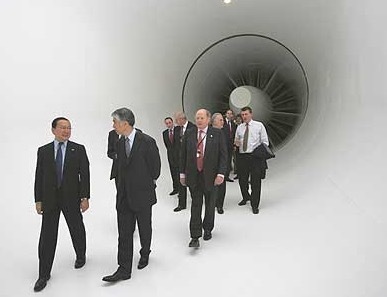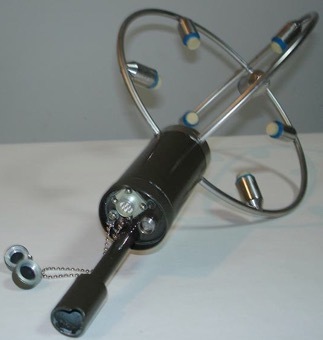Trumpet Calling
 In my recent article on ultrasound meteorological measurements, I talked about equipment for meteorology, which is successfully used to record basic meteorological characteristics, such as temperature, pressure, humidity, wind speed and direction, and only casually raised the issues of tuning and testing these instruments. The main task for this type of equipment is, first of all, accurate measurement of wind speed. But how to model the air flow in a fairly wide range? The solution is to create a wind tunnel. It would seem that it is easier to make such an installation? Put a powerful fan and you're done! However, not all so simple! Let's take a closer look at the work of the wind tunnel and its device. And for greater clarity, I came to one ofTomsk Institutes of the Academy of Sciences, where, at my request, they showed and turned on the wind tunnel and I shot a small 3-minute video of her work for GeekTimes readers
In my recent article on ultrasound meteorological measurements, I talked about equipment for meteorology, which is successfully used to record basic meteorological characteristics, such as temperature, pressure, humidity, wind speed and direction, and only casually raised the issues of tuning and testing these instruments. The main task for this type of equipment is, first of all, accurate measurement of wind speed. But how to model the air flow in a fairly wide range? The solution is to create a wind tunnel. It would seem that it is easier to make such an installation? Put a powerful fan and you're done! However, not all so simple! Let's take a closer look at the work of the wind tunnel and its device. And for greater clarity, I came to one ofTomsk Institutes of the Academy of Sciences, where, at my request, they showed and turned on the wind tunnel and I shot a small 3-minute video of her work for GeekTimes readersHow it works?
Wind tunnel - a technical device designed to simulate the powerful air flow and the impact of these flows on various objects. The use of pipes in aerodynamics is based on the principle of reversibility of movements and the theory of similarity of physical phenomena. Test objects in wind tunnels are models of full-scale aircraft or their elements, as well as various meteorological instruments, automobiles, etc.

In our case, ultrasonic weather stations are being tested in a wind tunnel , which should record wind speeds of up to 50-60 m / s. This is the pipe that I am writing about in this article.

Sixty meters per second is a very serious airflow. It creates a stream, of course, with the help of a suction device - shells driven by a powerful electric motor.

However, this allows you to create relatively small air flows and, most importantly, the flow will not be uniform, as physicists say - not laminar. It will contain turbulence that will distort the quality of the flow. How to solve this problem?
Elements of construction
In order to create a high-quality air flow inside the pipe (i.e., to provide a laminar air flow), it is necessary to break it up into many small flows. This is done with the help of this design.

This kind of air visor, which bursts into the air and passes through thousands of holes, like a grid (or honeycomb) with a very large step.

As a result, the air flow becomes more ordered (figure above), compared to the initial one - turbulent (figure below).
This massive metal construction is called hanikomb. From eng. Honeycombs - wiped under the knees of the jeans at the back, really something like a honeycomb. A source

But no matter how powerful the engine is, it is not always possible to develop the necessary air flow, provided that its laminarity is maintained. Sometimes you have to speed up the flow forcibly. To do this, use the air nozzle . This node is within certain limits, but it will very effectively accelerate the air flow to the required air speeds. However, for this acceleration to happen, a pressure drop is necessary. To do this, a vacuum chamber (prechamber) is installed after hanikomba, where such a drop is provided, then the accelerated flow goes to the working area of the wind tunnel, where it is directed to the object under study.

In general, the device in its principle of operation is quite simple, but requires high-quality manufacturing of all components, strict adherence to the geometric characteristics, quality of the internal surfaces, where protrusions, bevels, untreated welds, etc. are not allowed. Ideally, the inner surface of the pipe should be completely polished. Well, how does the pipe work - please watch the 3-minute video. By the way, this is a very small wind tunnel. Baby Its useful working volume is 40x40 cm. But this allows testing most meteorological instruments, such as this one.

Wind tunnels are extremely metal-intensive, so the price of such equipment non-linearly depends on the size of the working area and can reach under an hour and millions of dollars!
Have a nice day, everyone!
